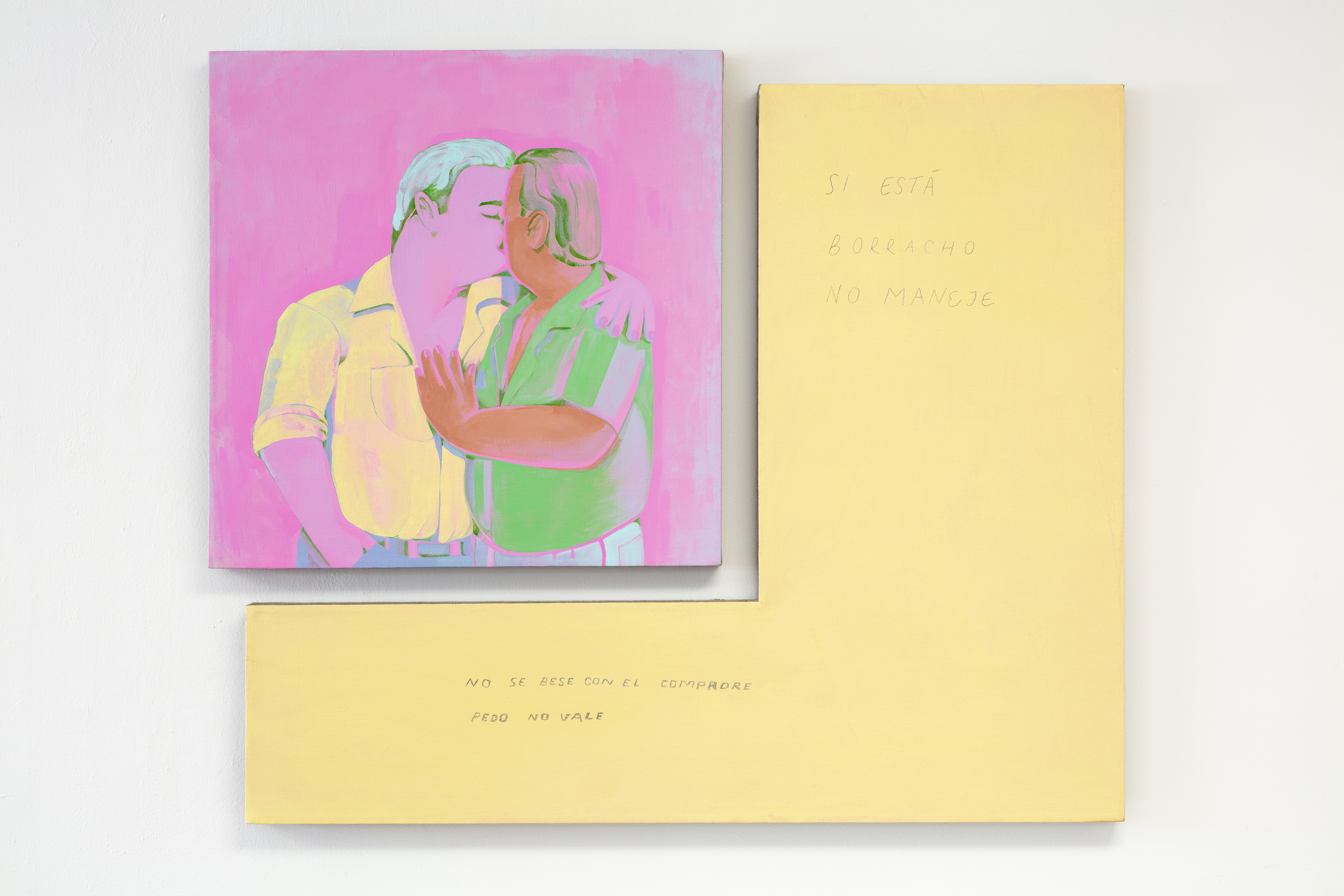
Review
Temporeros*, day laborers, graffiti artists: what photos would you take in the endless city? Gibrán Turón at Proyectos Monclova
by Verana Codina
Reading time
7 min
Gibrán Turón presents Éxitos humildes [Humble Successes], his latest solo exhibition, as part of El dilema de unir los puntos [The Dilemma of Connecting the Dots], a series of curations by artist Néstor Jiménez for Proyectos Monclova. The artist, in his Nayarit accent, somewhat satirical, introduced me to his show with the phrase: "I was like a kind of jornalero [day laborer] of graffiti."
A jornalero is someone who offers a service in exchange for remuneration per piece of work, per day, per wage. Without taking into account the time employed in its realization, the jornalero indiscriminately exchanges his trade. I immediately think of the possibility of this agreement as trade, where sometimes the established amount becomes so low that the work turns almost into a barter.
Similarly to this mode of operation, the artist and illustrator began to explore mural painting, street art. During the tour, Gibrán shared how at the outset, when he decided to jump from paper to wall, he embarked on the feat of hitting the sweltering streets of his native Tepic to ask his neighbors for a piece of wall, for a “plot.” They accepted to trade their lines and messy graffiti in exchange for a drawing that they liked in order to decorate their gnawed facades. Little by little, the artist accumulated a catalog of motives and images that served as a sample folder for his next clients, as well as to form a personal reference file soon consulted and taken up in his own visual and narrative repertoire.
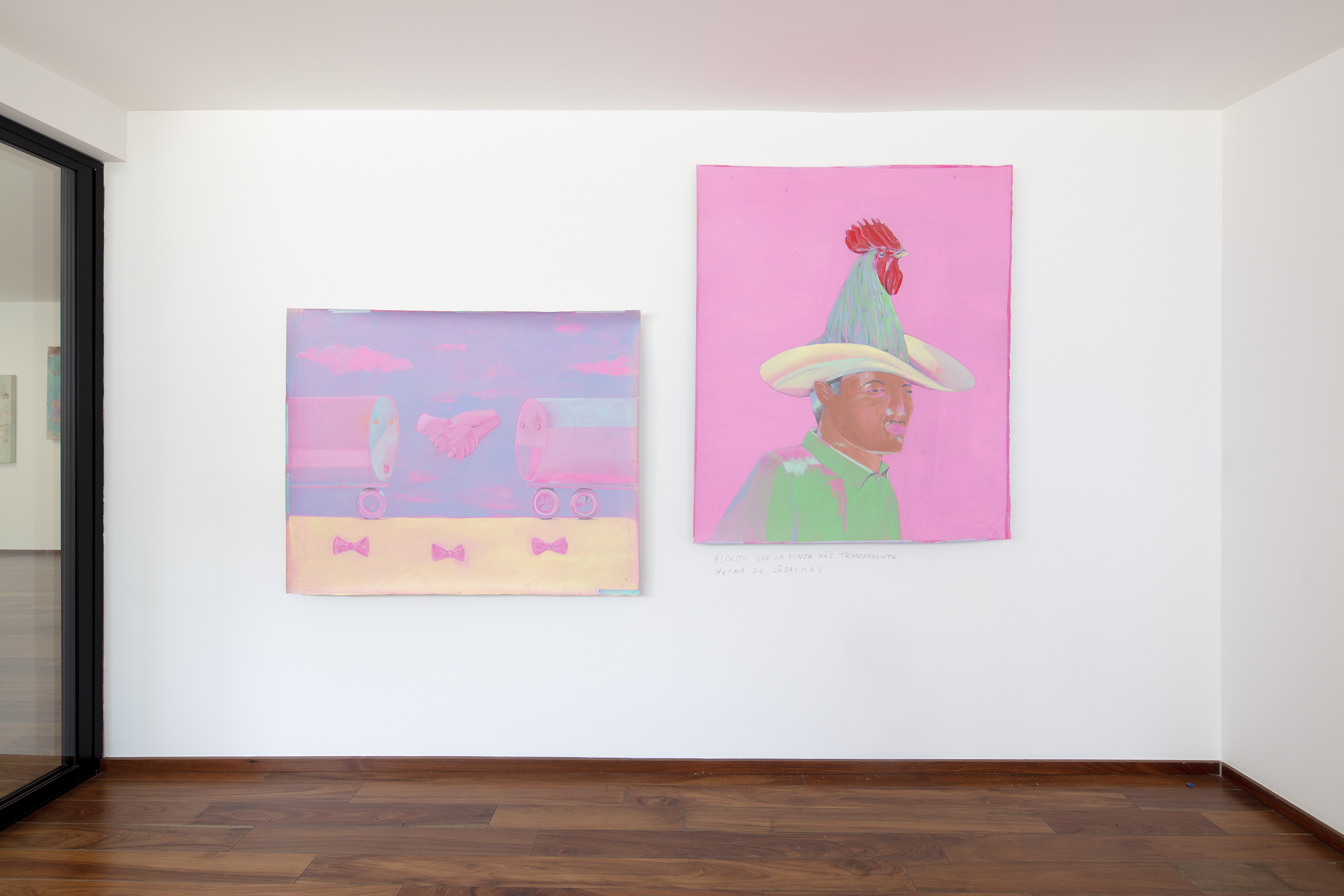
This connection with the streets neither begins nor ends here. The archive, which is not limited exclusively to images, as the written and spoken language also slip in, comes from and happens at the neighborhood exchange: callejoneo.²
La hora de la identidad acumulativa - ¿qué fotos tomaría usted en la ciudad interminable? [The Time of Cumulative Identity–What photos Would You Take in the Endless City?] is the title of a chronicle by journalist Carlos Monsiváis, who, with his acidic and accurate humor, describes a series of iconic images that represent the popular essence of the old Distrito Federal³: a concert in La Raza, a Good Friday on the Via Crucis of Iztapalapa, an overflowing pool at some balneario during Easter Week, a soccer celebration in the Angel of Independence, a subway car during rush hour, etc. Like Monsiváis, Gibrán is also interested in the ubiquity of the street and the exchange that occurs between its inhabitants, using encounters he witnesses in his wanderings. No se bese con el compadre [Don’t kiss your friend] and Si está borracho no maneje [If you're drunk don't drive] are some of the phrases the artist collects in his wandering notebook. Whether heard in conversations or read in signs and cardboard that invade urbanity, these phrases and events function as tiny parentheses in time, flashes that Gibrán tries to encapsulate and fix in his notebook to revisit in the future and develop in his drawings, canvases, and murals.
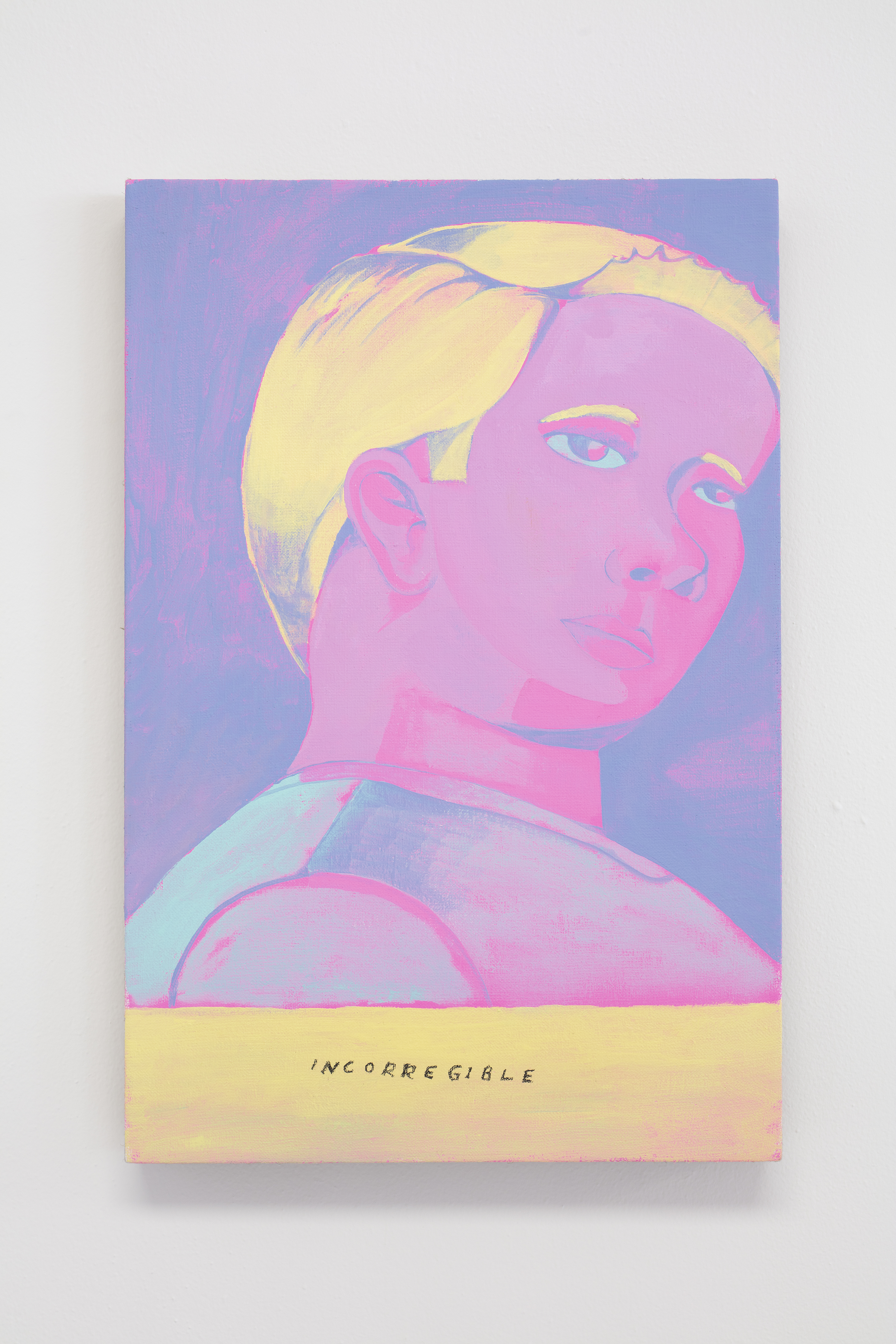
Although his training as an illustrator brings him closer to the graphic novel and comic, the artist opts for other formats—such as painting—where a linear narrative is not compromised. He is interested in the impermanence of an event: "...on the street, if you don't understand it, you don't understand it." Rather than stories that begin and conclude, what happens in and within his work remains open, suggestive. If the event ever existed, it doesn't matter, because there might be a thousand more versions. The rhetorical possibility that exists in the language of the city streets, word games combined with symbols and images, is infinite.
An example can be seen in Infantiles [Children], a series of portraits whose original photographs come from barbershops advertising haircuts for children. Each hair style corresponds to an adjective written at the bottom of the painting, à la John Baldessari. 'Multifaceted', 'Uncontrollable', 'Spoiled', persuade whoever wishes to identify with the archetype. This consumption strategy—a subject of interest for the artist from a more advertising side of his—responds to a part of the population that is usually accustomed to informal commerce, where businesses often flourish due to their location on public roads.
The coexistence, exchanges, and transactions here carried out have another time, another accent, another tone: genuine fun triumphs.⁴ Something I am sure Gibrán, being from Nayarit, would agree with is that life on the street, like on the beach, has more flavor.
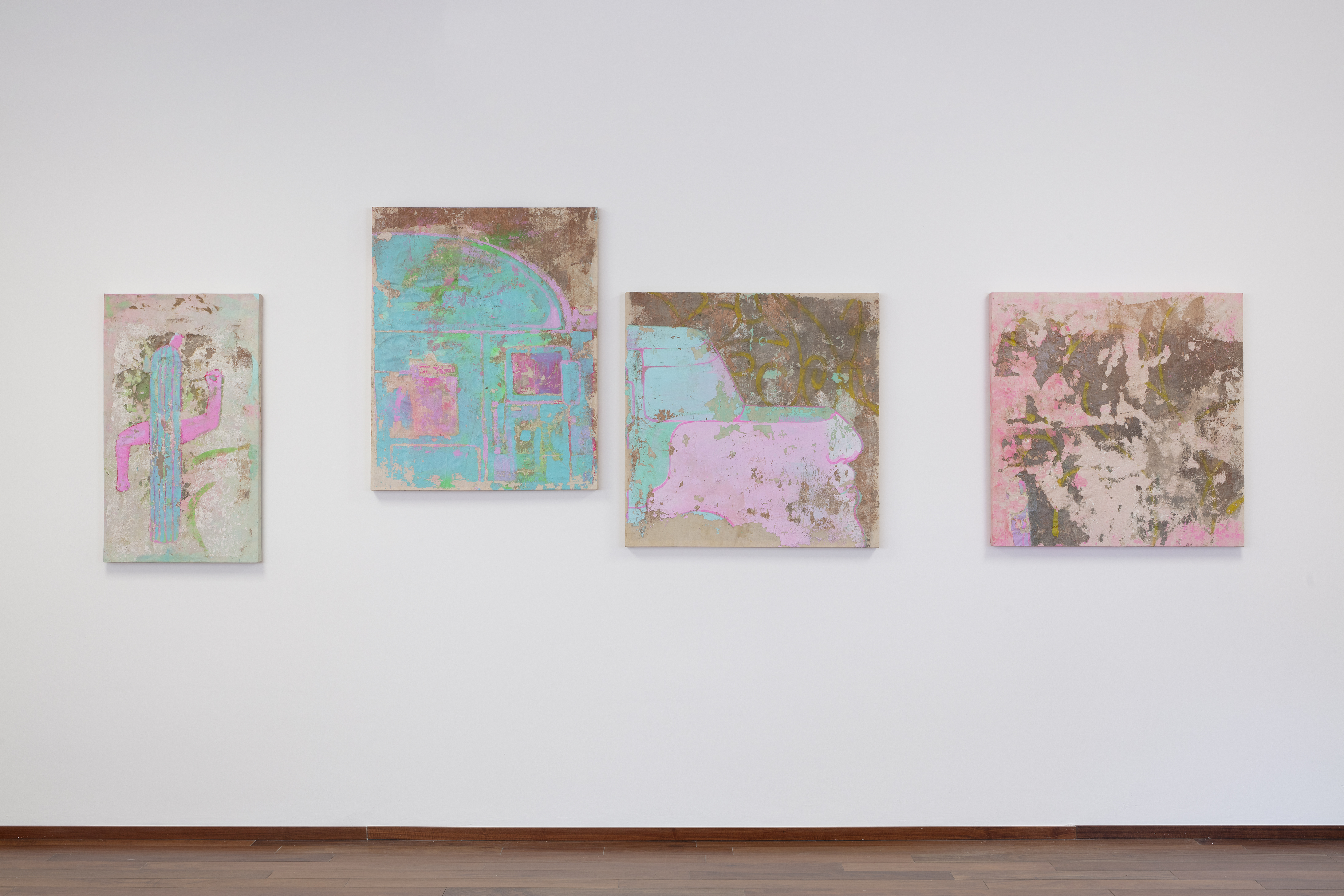
The endless city is discovered while strolling, forever fleeting, always changing. Impermanence appears even in what tries to take root. For the occasion, Amanecer distinto [A Different Dawn]—a mural previously located on a wall of avenida Eugenia, in la Colonia del Valle—was violated, pulled from its original support, and what survived of it brought to four canvases that now occupy a space of the gallery. Through the usage of strappo, a technique that allows the painting to be gently peeled off a surface then transferred to another, Gibrán alters the inherent condition of graffiti and rescues it to immortalize it on canvas.
The work does not emerge alone; it comes layered with the paint that was on the wall long before the artist painted over it. Even if it may seem at odds with street life–to pull a mural off the street and tuck it into a gallery space–rather than a result, I think of this action as an exercise where the materiality of a medium is explored, along with the passage of time on a support that, given its variability, could hardly be addressed in this almost-archaeological way.
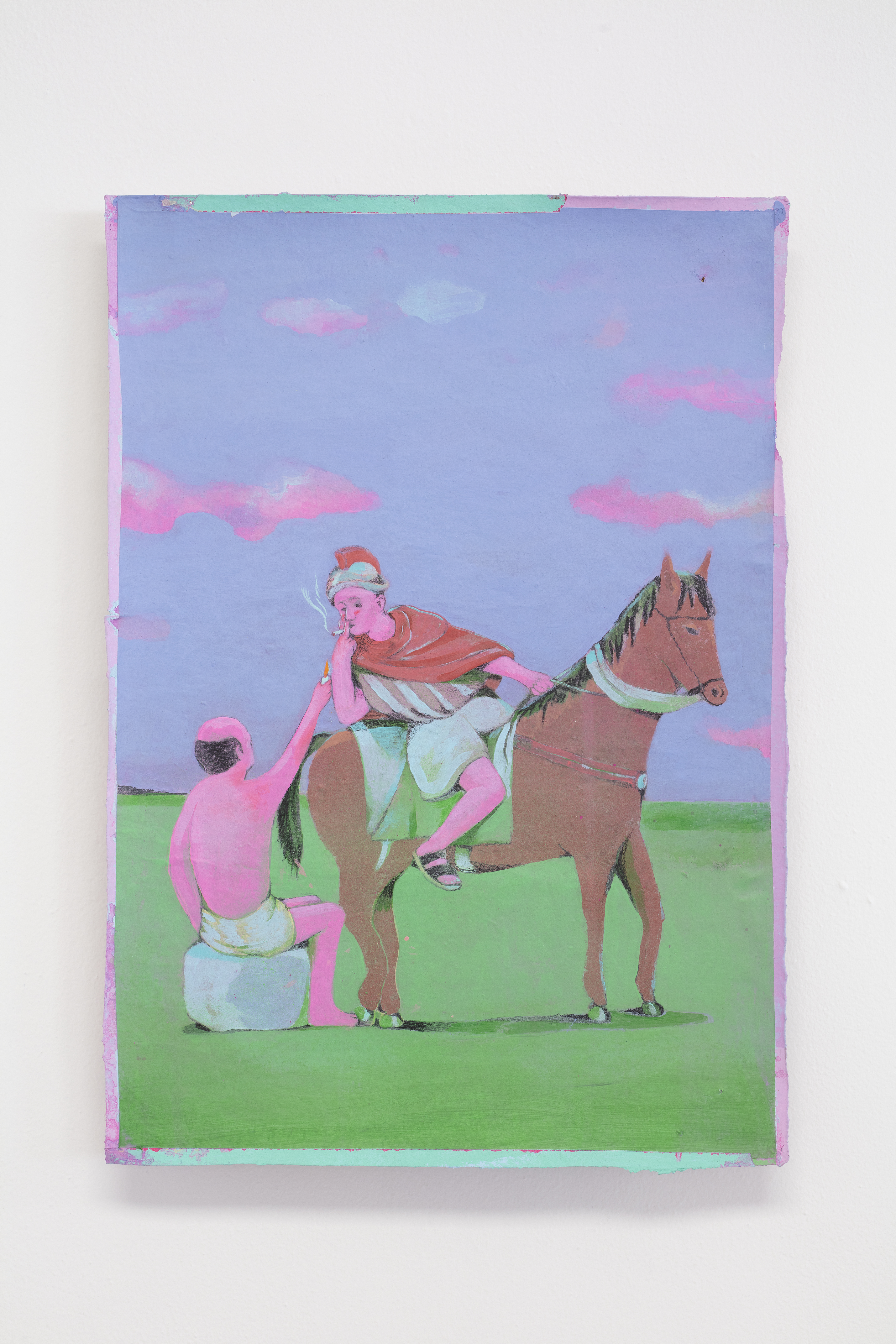
This interest leads me to the importance the artist places on replicating certain materialities—such as that of irregular walls and murals—in his paintings on pellon fabric. In Fina estampa [Fine Print] y Dame luz [Give Me Light], Gibrán manages to imitate the peeling surface of an area that has been exposed to the weather for the last fifty years, which in turn has a color palette so bright it would be impossible to confuse its contemporaneity. On the other hand, the choice of shades commemorates its editorial background and recalls those of a risograph print.
Éxitos humildes brings together a diverse repertoire of the broad body of interests and work that the artist from Tepic has undertaken. From drawing—present as a starting point in his notebook where he registers scribbles, images, phrases, and thoughts—through his connection with street painting, murals, and graffiti, and to the strong influence of the risograph world and zines. This diversity makes the exhibition an exchange between him and what exists in and thanks to his close relationship with the street.
Translated to English by Luis Sokol
* A person who performs a specific job during a certain time of the year.
² The act of walking through callejones [alleys].
³ Mexico City was also called Distrito Federal [Federal District or District Capital] before the name was officially changed to Mexico City [CDMX] in 2016.
⁴ “Genuine fun (irony, humor, mess) is the most tangible demonstration that, despite it all, some of the rituals of chaos can also be a liberating force.” Translated to English from Spanish from Carlos Monsiváis. Los rituales del caos. 1995, p. 16.
Published on April 13 2024